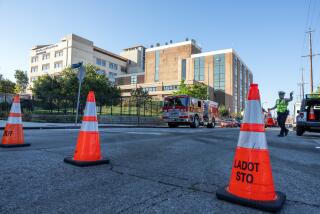Los Alamos Lab Admits Major Faults, Lists Causes
LOS ALAMOS, N.M. — Los Alamos National Laboratory released a critical self-evaluation Friday saying that the lab has been complacent, ignorant and not accountable for protecting the environment and workers.
Those are among major “root causes” of lab environment, safety and health problems, which range from lack of leadership to noncompliance with Energy Department maintenance and anti-pollution orders.
The findings highlight noncompliance with state and federal water discharge rules, the lack of a worker occupational safety program and inconsistent observance of radiation protection procedures.
The report was disclosed by lab director Sig Hecker in preparation for an Energy Department “Tiger Team” study. The teams were set up by Energy Secretary James D. Watkins in 1989 to strengthen environmental, safety and health programs, known as ES&H;, at the department’s facilities.
The self-assessment blamed the laboratory’s problems on four major causes, which, when corrected, will prevent recurrence of such problems, it said. The four identified root causes are:
--Fifty years of largely trouble-free science, resulting in “the arrogance that derives from an extended period of excellent technical accomplishments (and has) led to complacency about ES&H; issues.”
--Ignorance of ES&H; standards and slowness to learn from outside groups, resulting in the lab’s “living in isolation from dramatically changing public attitudes and standards for ES&H.;”
--Preoccupation with science and placement of value on individual and group accomplishments rather than institutional responsibilities, resulting in “inadequate attention to the social obligations of the by-products of science, such as environmental effects.”
--Wide belief that environmental and safety concerns were the function of some other division, resulting in a lack of “ownership” of environmental problems.
The root causes were gleaned from 770 separate findings, which are specific environmental, safety, health and management situations that have contributed to problems at the laboratory, which is operated by the University of California.
Among the separate findings:
--The lab has no procedure for accepting and incorporating new environment, safety and health regulations in ongoing lab operations.
--Training on environmental and safety matters is inadequate.
--Programs dealing with radiation protection, water management and emergency preparedness are inadequate.
--Facilities and programs for identifying environmental pollutants and discharges are inadequate.
More to Read
Sign up for Essential California
The most important California stories and recommendations in your inbox every morning.
You may occasionally receive promotional content from the Los Angeles Times.









